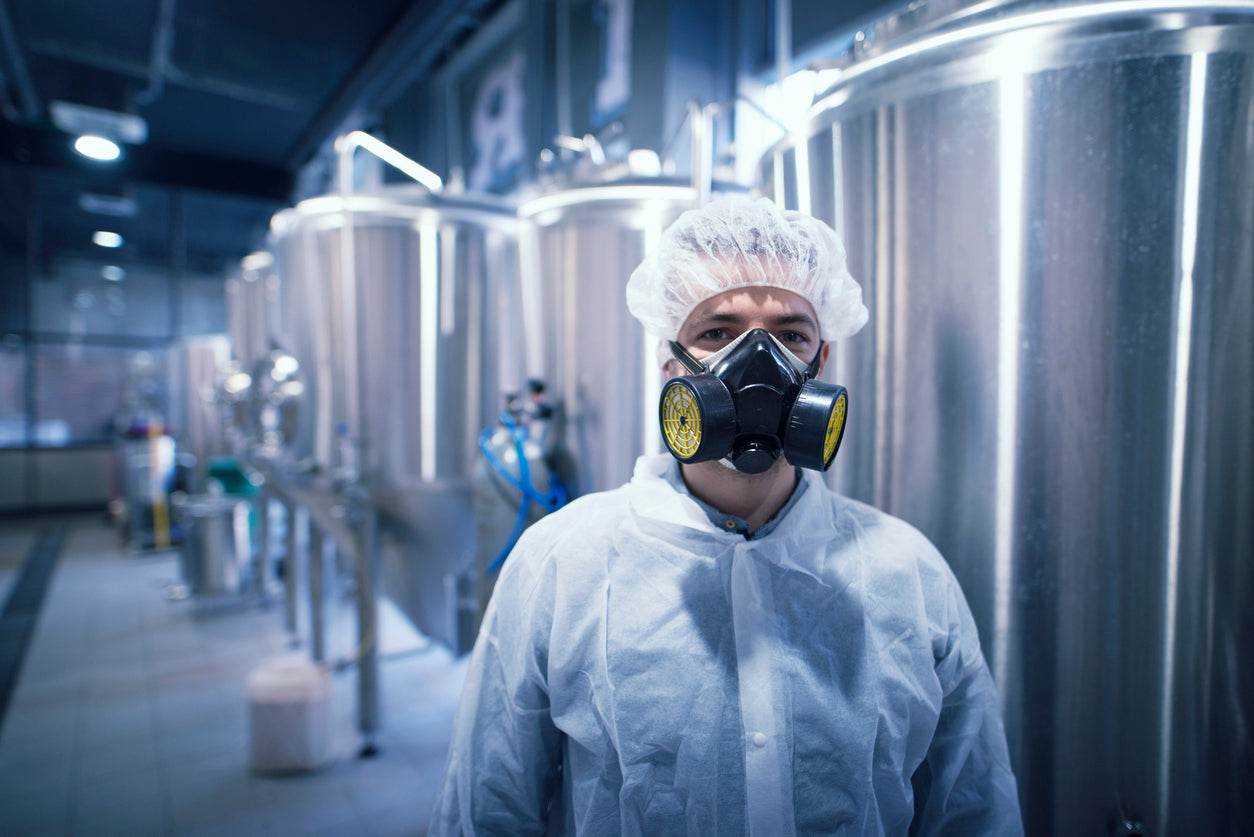We provide a wide variety of tests in both diffusive and tube formats. Please take a look at our offering - If what you need is not here, contact us and we"ll do our best to find a way to measure it. Do notice that most of our samplers are provided by SKC and are all highly validated by both the manufacturer and government labs like NIOSH and OSHA. In addition, we run verification tests to confirm the proper function of these samplers.


With Air by CCSquared, you can measure VOCs using both standard GC-MS (liquid injection) and thermal desorption (TD) methods. We find that the TD method with the adsorbent Tenax-TA is exceptionally good for measuring higher boiling organic solvents and semi-volatiles (like chlorinated pesticides). Tenax-TA is hydrophobic, so water adsorption during sampling is less of an issue and samplers can be exposed for weeks, up to a month. We offer exploratory products that use either Texax-TA or Anasorb 747 in a diffusive sampler. The Tenax TA sampler is best used to collect samples with boiling points higher than 85oC. We can also run multi-bed tubes as recommended by EPA-TO-17 that contain multiple media separated by glass wool (multi-bed tubes). This allows chemicals with a broader range of boiling points to be measured simultaneously and is recommended for professional use.
We also offer a diffusive sampler with a propietary adsorbent for use in detection of trace chlorinated C2 hydrocarbons such as vinyl chloride. Please see our Indoor Air page for more detail.
Note that we list alcohols as a separate product for your convenience, although these can be found on our VOC’s page - these can be mixed and matches with many other chemicals.
We use the NIOSH 2018 method to measure aldehydes using either diffusive samplers or sampling tubes. This method provides the most accurate measures of aldehydes available today, with a few caveats. The samplers are sensitive to heat, so we suggest that these be stored, and shipped refrigerated. Decomposition of the media can produce a background signal that's difficult to account for and thus can result in false positives. This is a problem that we're working on, so stay tuned. For now, just be aware of the problem and avoid leaving the samplers in hot environments (like autos in the summer) and try to ship the samples to the lab on ice.
Formalin. OSHA has published (OSHA 1007) that the products of reaction of formaldehyde with methanol present in formalin interfere with the measurement of formaldehyde with a diffusive sampler. These studies were conducted with vapors made by the intentional evaporation of concentrated formalin and appear to be isolated to specific laboratory conditions. Diffusive samplers have been compared to sampling tubes in pathology laboratories (also see SKC tech note) and found to be significantly similar. Perhaps the OSHA observation only applies to concentrated formalin since more users dilute it with water before use, diluting the effect of the methanol. We might imagine a situation where concentrated formalin is being aerosolized and vapor is formed by the evaporation of microdroplets. In a situation like this, we might expect to detect methoxymethanol in the vapor phase and thus the diffusive sampler will lose accuracy. If you have a concern, simply run a sampling tube (SKC 226-119) in parallel with the diffusive sampler and see if you get comparable results. The sample tube will collect both formaldehyde and methoxy methanol at the same rate; the diffusive badge will collect the formaldehyde at a higher rate than the methoxy methanol. If methoxy methanol is present in a high enough concentration, the diffusive sampler will read a lower value than the sampling tube. Please note that the comparison of sampling devices in static air can lead to incorrect results because air samplers act as little air purifiers. Formalin is best handled in well-ventilated areas so the “little purifier” effect should be minimal. One thing to note is that formalin typically contains 10-15% methanol, so the monitoring of formaldehyde should be accompanied by the monitoring of methanol. Please see our alcohol product page for more information.
Acrolein. If acrolein is suspected and you are concerned, we recommend measuring it independently as described in NIOSH 2501, where it is captured with 2-hydroxymethyl piperidine and the oxazolone product measured by gas chromatography. In the EPA TO-11 method, acrolein produces at least 3 different products that overlap with the peaks associated with propanal and acetone, making analysis of these C3 aldehydes difficult. Acrolein has one peak that is usually well resolved, so we can detect it by HPLC and notify you if other measurements are necessary. We're busy developing a new method to measure acrolein that uses thermal desorption GC-MS as described in a recent publication from Alexandra Schieweck at Fraunhofer WKI.


Diacetyl, the popular butter flavoring used in the food and beverage industry has been found to cause the devastating lung disease Bronchiolitis Obliterans (popcorn lung), a form of obstructive lung disease that results in the loss of lung capacity. Our offering was motivated by a recent NISOH report that describes the studies that lead to new lower RELs: 5 ppb for diacetyl for an 8 h workday and 25 ppb for 15 min.
Diacetyl is only one of a series of 1,2-dione containing substances that are used as food flavorings, mixtures of which give foods characteristic smells. For example, 2,3-pentanedione is found in alarming concentrations during the grinding of roasted coffee beans, and should likely be controlled in coffee roasteries and coffee shops. It’s interesting that these substances smell like butter alone, but when mixed in different proportions can take on entirely different smells. For example, we have generated the smell of yogurt here in the lab, which is a mixture of diacetyl, acetoin, and 3,4-hexanedione.
Please see our blog for a mini-study of dione exposure during coffee grinding at a local grocery store.
Here's something new from the laboratory of Irena Kralj Cigić at the University of Ljubljana in Slovenia. These investigators have found a way to measure formic and acetic acids by capturing with triethanolamine in a diffusive monitor (SKC UMEX-200, see the publication here). We run this method exactly as described in this paper.
